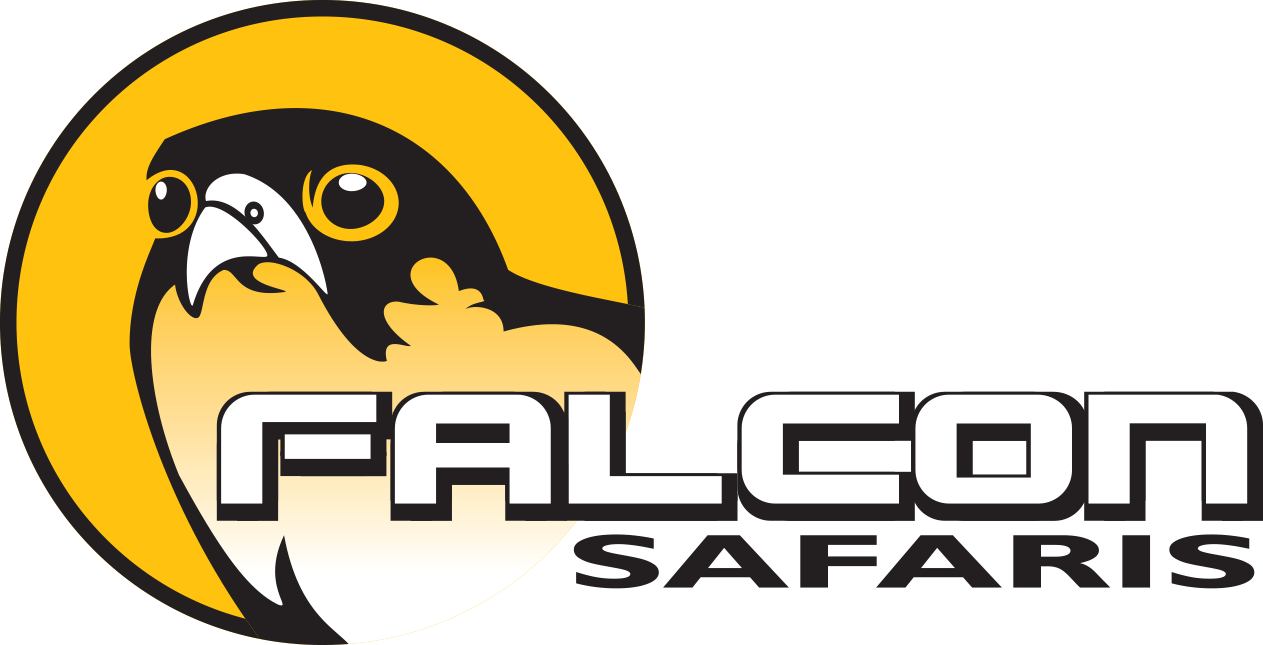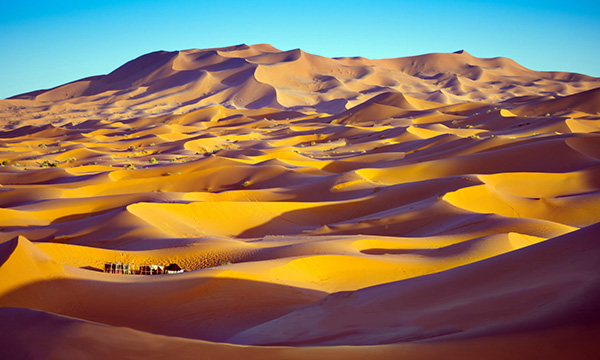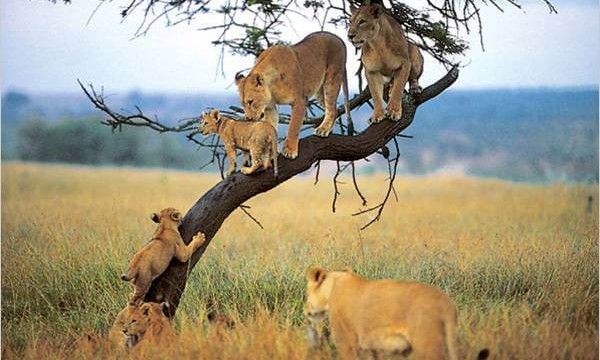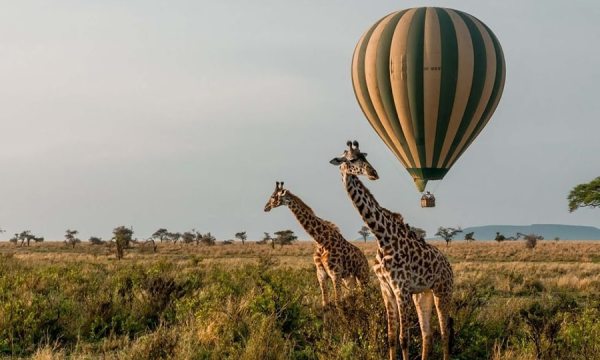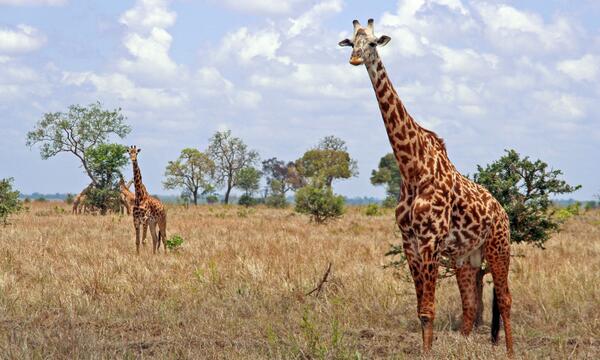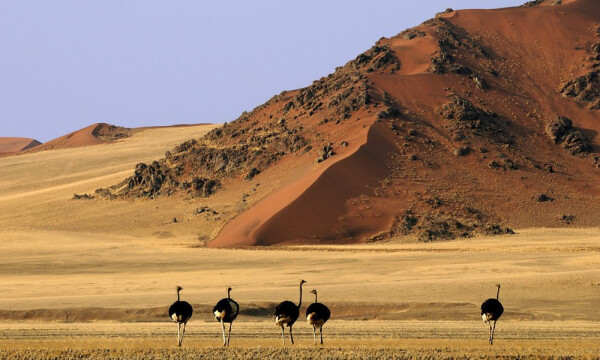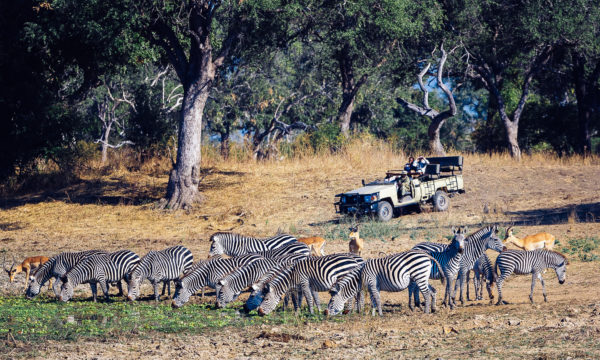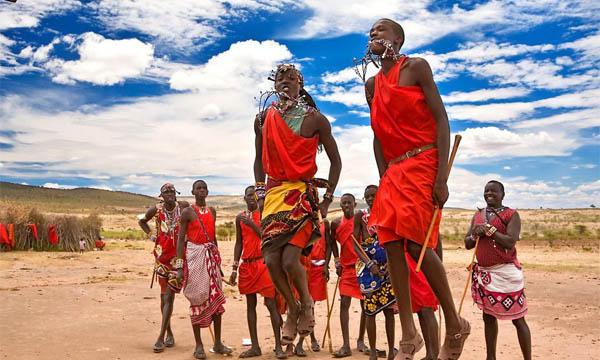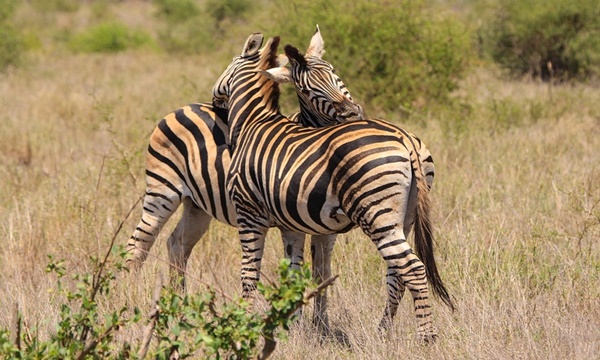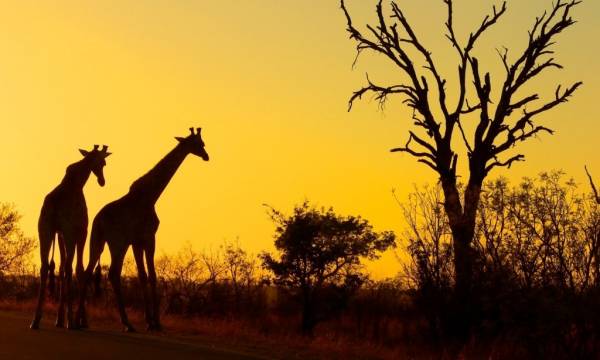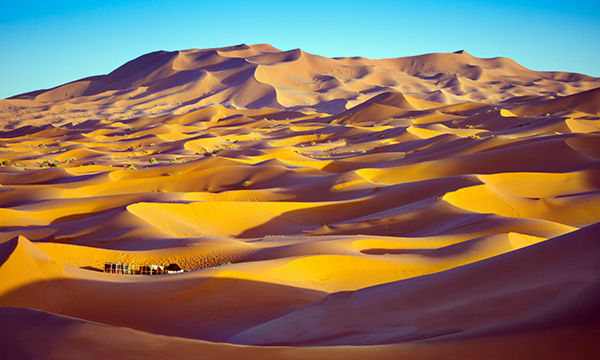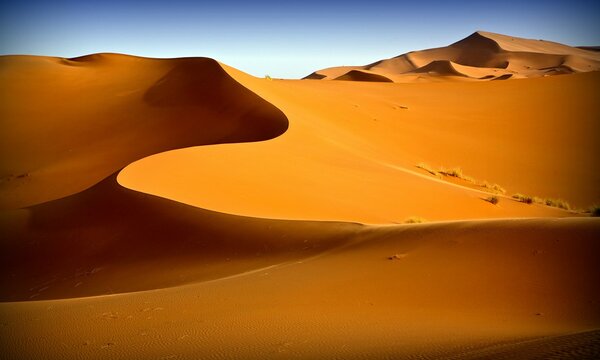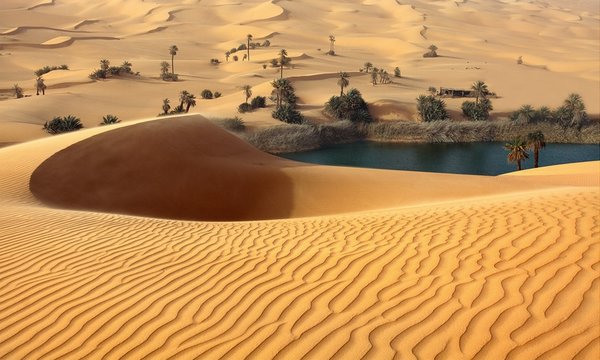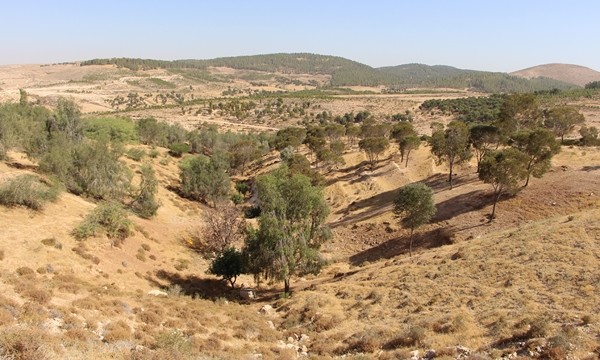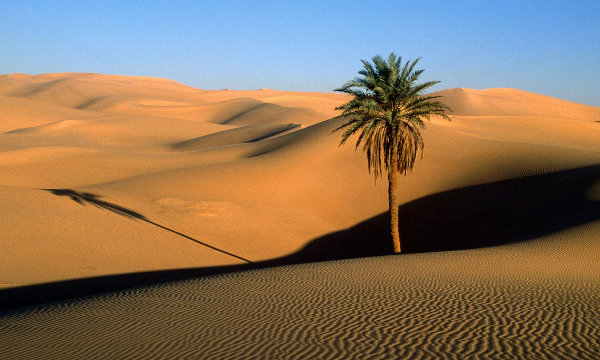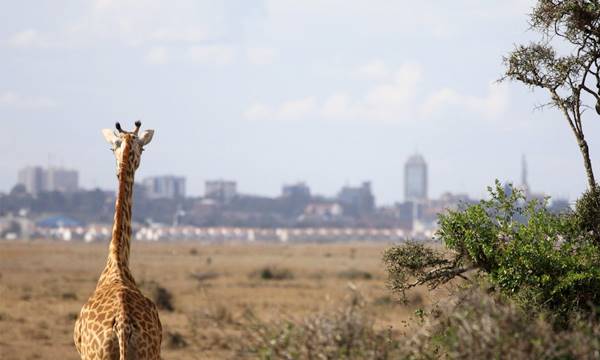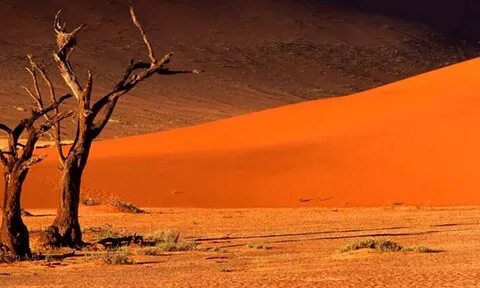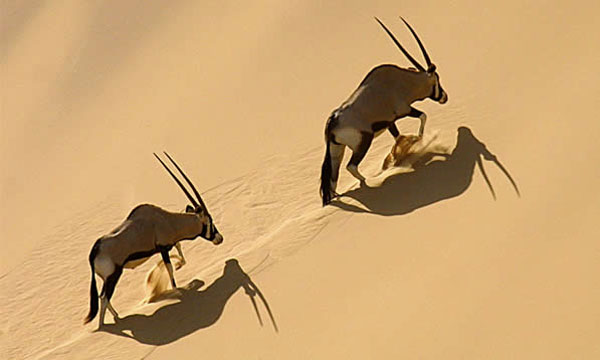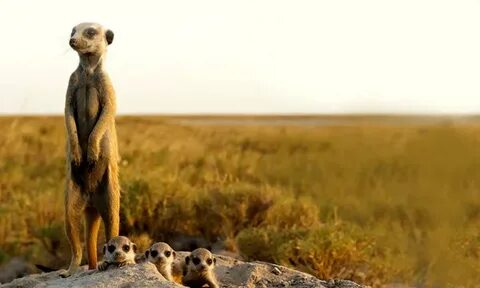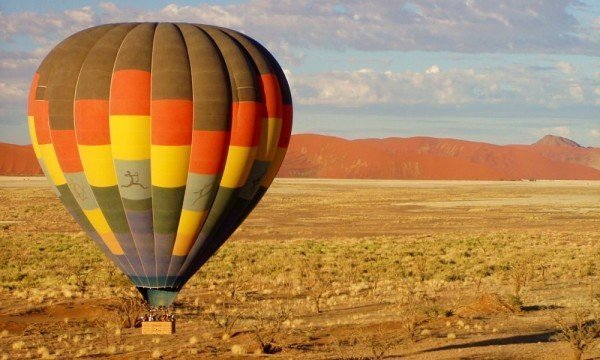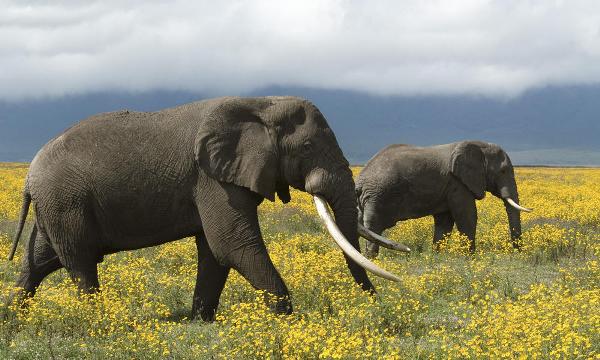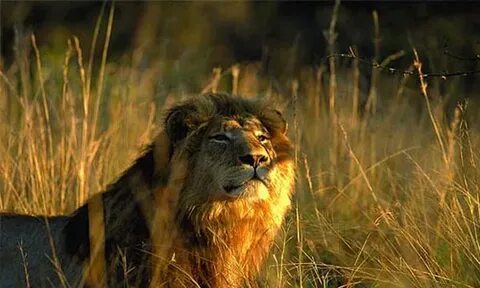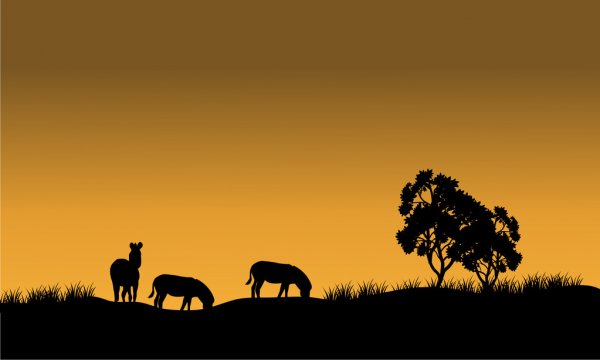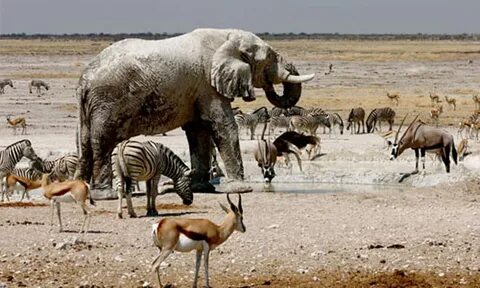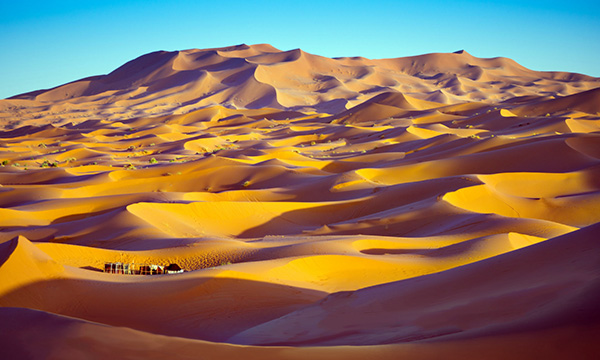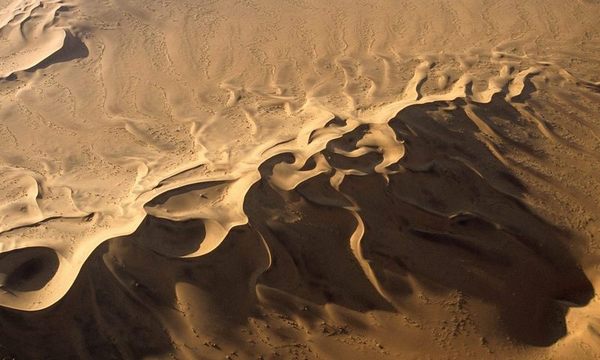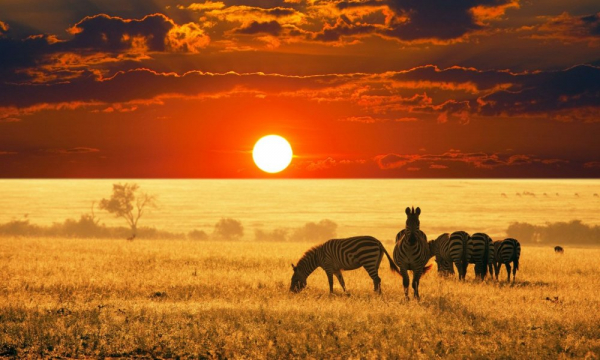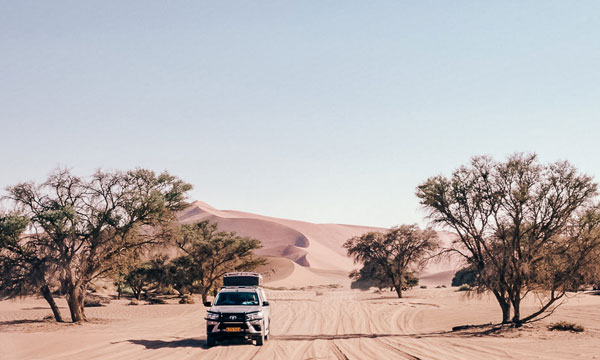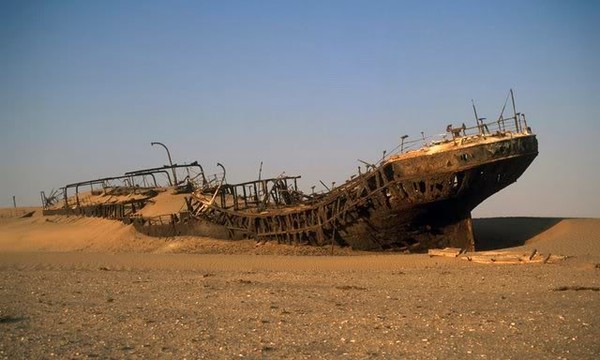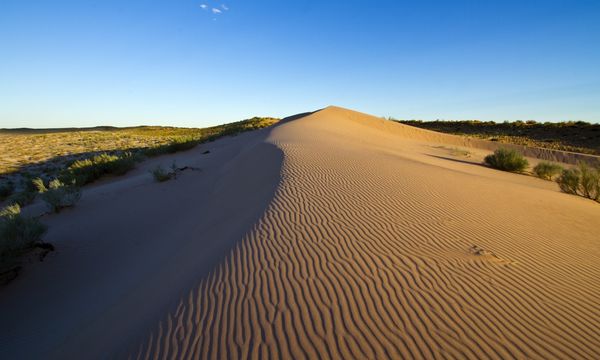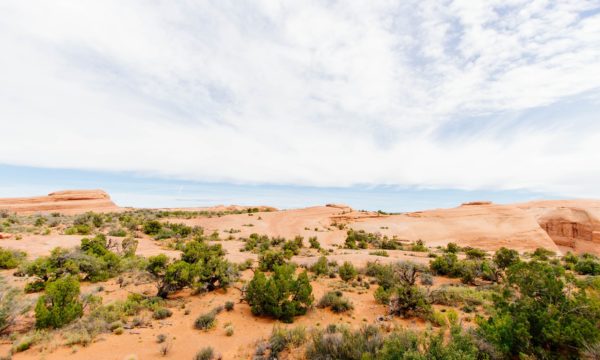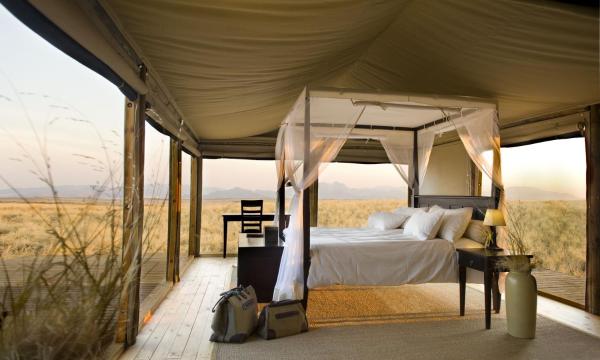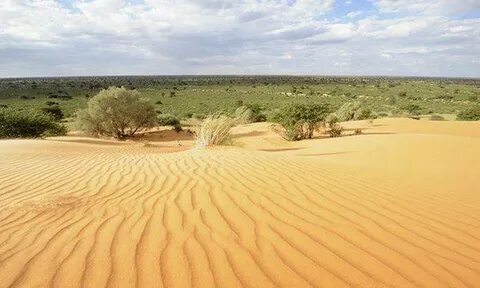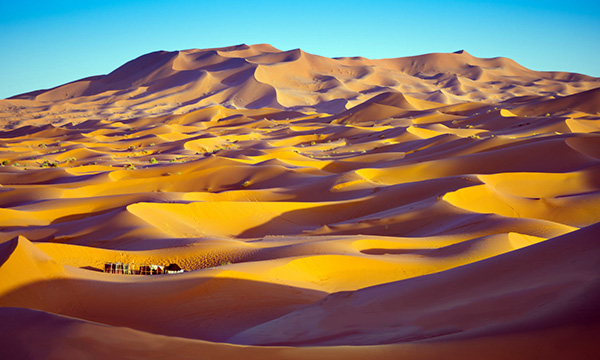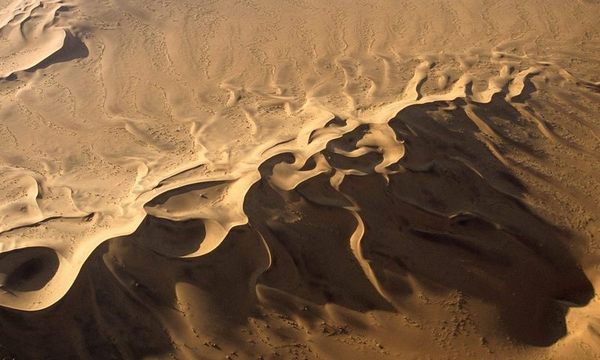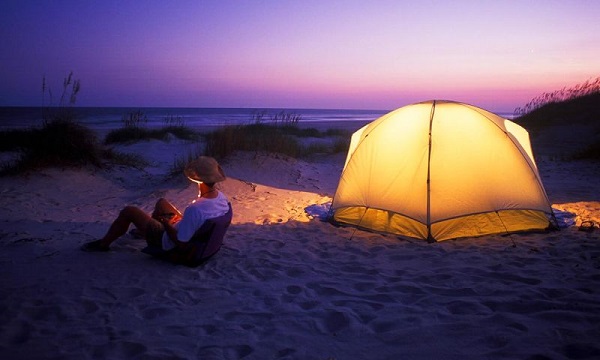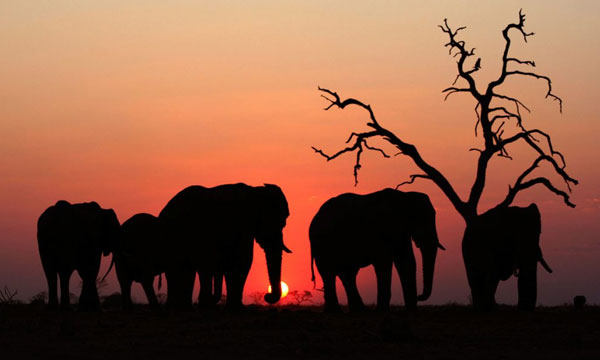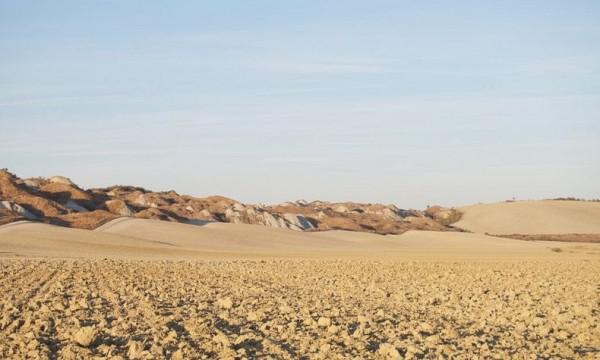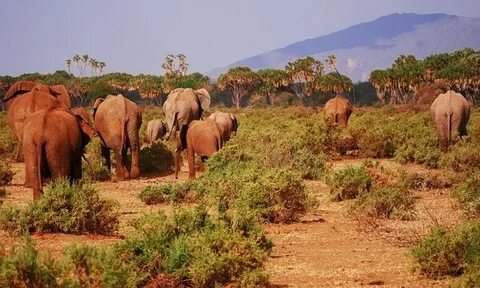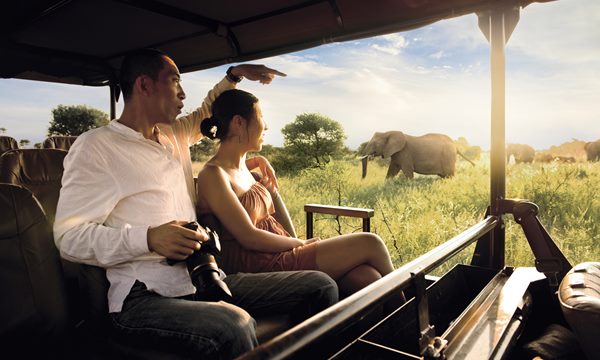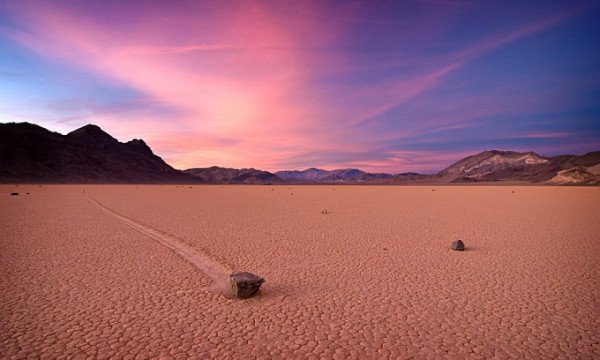Call Us
8:00am - 17:00PM
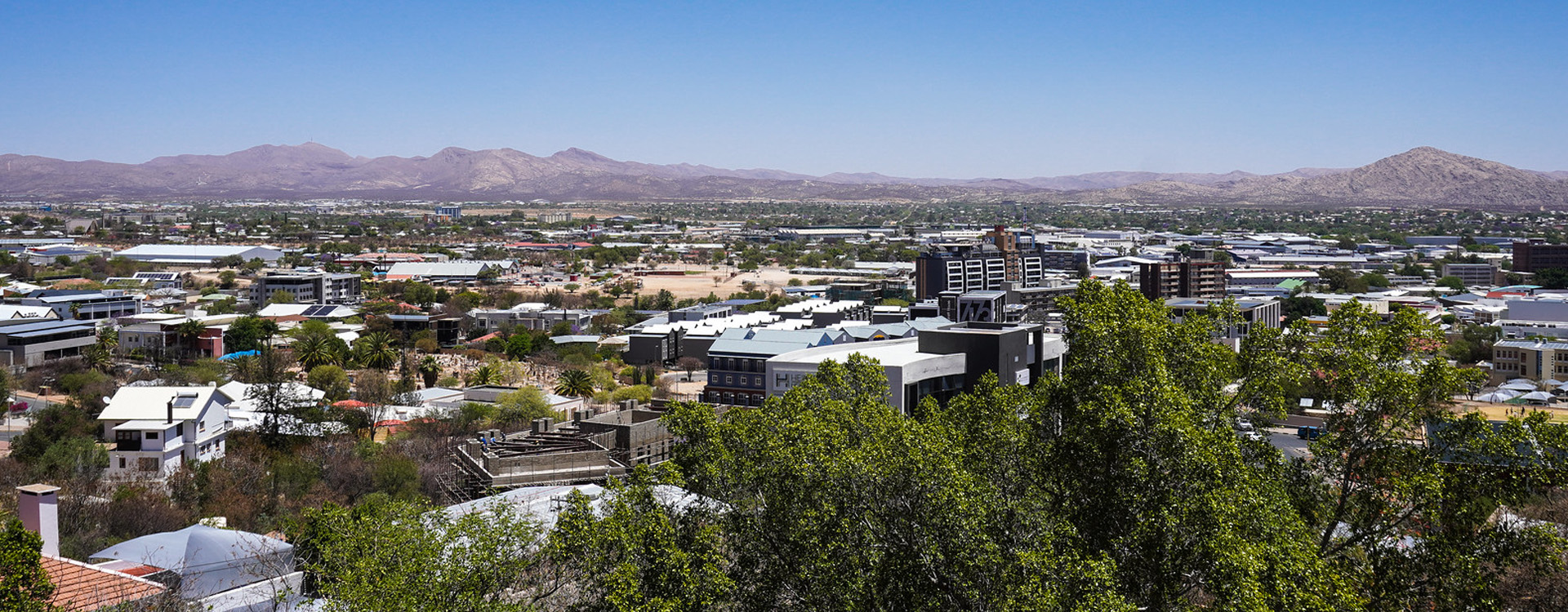
Windhoek
About Windhoek
Windhoek is the capital and largest city of Namibia, located in the central highlands of the country. With a population of approximately 400,000, it is the political, economic, and cultural center of Namibia. The city is known for its German colonial architecture, vibrant nightlife, and diverse population which you can discover during your Namibia Safari.
With its blend of history, culture, and contemporary vibrancy, Windhoek invites you to experience Namibia's heart and soul.
Windhoek Tours and Safaris
We Think You’ll Love
Best time to visit
The Best Time to Visit Windhoek is between June and September. During these months, the climate is most favourable, offering cooler temperatures that avoid the summer heat which can soar up to 31℃ (87℉). Winter temperatures rarely drop below 4℃ (40℉), making it a comfortable period for exploring. This timeframe also aligns with lower travel and accommodation costs, and misses the peak holiday rush, ensuring a more relaxed and enjoyable visit to Namibia's vibrant capital.
Wildlife
Windhoek serves as a vibrant gateway to Namibia's diverse wildlife. From the NamibRand Nature Reserve, rich with oryx and ostriches, to the Daan Viljoen Nature Reserve, where giraffes and wildebeests roam, Windhoek is a haven for nature lovers. The Naankuse Wildlife Sanctuary and Avis Dam Nature Reserve further highlight the area's natural beauty, offering encounters with lions, cheetahs, and scenic walks.
What To Experience
We think you will love
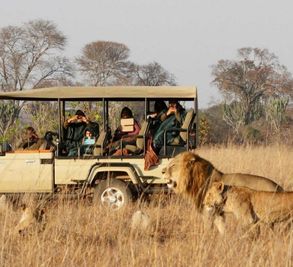
Game Drives
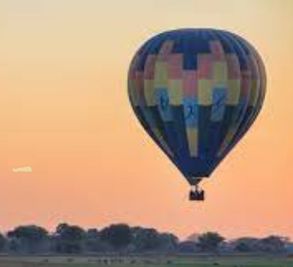
Ballon Safari
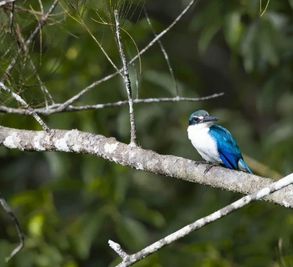
Birding

Walking Safari
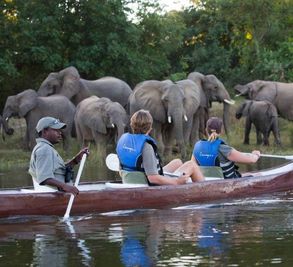
Boating Safari
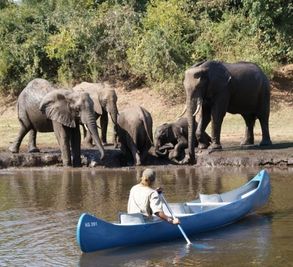
Canoeing
Travel Guide For Windhoek
We Think You’ll Love
History Of Windhoek
Windhoek, was founded in 1840 by Jonker Afrikaner, a Nama leader. The city was initially called "Ai-Gams," meaning "hot springs" in the local Khoekhoe language. In 1890, Windhoek became the capital of German South West Africa, and the German colonial government built several buildings and infrastructure, including a railway line. After World War I, South Africa took control of the territory, and Windhoek continued to grow as a commercial and administrative centre. In 1990, Namibia gained independence, and Windhoek became the capital of the new nation. Today, on your Windhoek Tour, you will find that this city is bustling with a rich cultural heritage and diverse population.
Best Time To Visit Windhoek
As we have mentioned above, the Best Time to Visit Windhoek is from June to September. But, even if you skip this time, there’s always to discover in Windhoek during the other season.
Here we have done a breakdown of monthly weather patterns in Windhoek city,
- January to March:
These months are the wettest and the hottest, with temperatures often exceeding 35°C (95°F). However, this is also the best time to see new-born animals in Etosha National Park.
- April to May:
This is shoulder season, with cooler temperatures and fewer crowds. It's a good time for hiking and seeing landscapes with greenery and wildflowers.
- June to October:
These months are the peak season, with cool, dry weather and excellent game viewing in Etosha. However, it's also the busiest time, and accommodation can be expensive.
- November to December:
These months are still dry, but temperatures can be scorching, especially in the south. It's also the time when birdwatching is excellent.
Additionally, if you’re planning a Windhoek City Tour, you should be aware of the rainfall patterns in Windhoek.
Getting In To Windhoek
Getting in and around Windhoek is easy, you can approach three different ways, air, road and rails. Among all these three options, the most convenient option for Windhoek Tours is by air.
By Air-
The Hosea Kutako International Airport, located approximately 45 km east of Windhoek, is the main airport serving the city. Several airlines operate flights to Windhoek from major cities in Africa and beyond.
Here is a list of major airlines that connects to Windhoek from different parts of the world.
|
Airline |
Hub Airport |
|
Air Namibia |
Hosea Kutako Int'l Airport (WDH) |
|
South African Airways |
O.R. Tambo Int'l Airport (JNB) |
|
Ethiopian Airlines |
Addis Ababa Bole Int'l Airport (ADD) |
|
Qatar Airways |
Hamad Int'l Airport (DOH) |
|
KLM Royal Dutch Airlines |
Amsterdam Schiphol Airport (AMS) |
|
Lufthansa |
Frankfurt Airport (FRA) |
|
British Airways |
London Heathrow Airport (LHR) |
|
Emirates |
Dubai Int'l Airport (DXB) |
|
Turkish Airlines |
Istanbul Atatürk Airport (IST) |
|
Air France |
Paris-Charles de Gaulle Airport (CDG) |
*Note that this list is not exhaustive and there may be additional airlines operating flights to Windhoek from various destinations. Always latest updates on flights before you book.
By Road -
Road transport options include buses, taxis and rental cars, with a well-developed network of roads connecting Windhoek to other major cities in Namibia and neighboring countries.
Here are some road transport options that can useful be during your Windhoek Tours.
Private car: Windhoek is connected to major cities in Namibia via a well-maintained network of paved roads. If you have access to a car, you can drive to Windhoek from cities such as Swakopmund, Walvis Bay, and Gobabis.
Bus: Several bus companies operate regular services to Windhoek from various cities and towns in Namibia. Some of the popular bus companies include Intercape, Eagle Liner, and TransNamib.
Taxi: Taxis are widely available in Namibia, and you can hire a taxi to take you to Windhoek from various locations within the country.
By Rail -
Rail travel is also an option, with the TransNamib Railway operating trains from destinations such as Swakopmund and Walvis Bay to Windhoek.
Getting Around Windhoek
Taxis: Taxis are readily available throughout Windhoek Safari, and they are a convenient way to get around the city. Make sure to negotiate the fare before getting in the taxi.
Buses: Windhoek has a public bus system operated by the City of Windhoek, with several routes covering different parts of the city. Fares are affordable, and buses are usually crowded during peak hours.
Car rentals: If you prefer to drive yourself, car rental companies such as Avis, Budget, and Europcar operate in Windhoek, and you can rent a car for a day or longer.
Walking: Windhoek is a relatively small city, and walking is a good way to explore the city center. Just be aware of your surroundings and take precautions against pickpockets.
Biking: There are several bike rental companies in Windhoek, and biking is a great way to explore the city at your own pace. Just make sure to wear a helmet and follow traffic rules.
Culture Of Windhoek
Everything in Windhoek is entertaining and enlightening. People in Windhoek are warm, friendly and welcoming. And, their culture is also vibrant, just like their cultures, the people of Windhoek also speak a lot of languages, which you will see on Windhoek City Tour.
Culture
Windhoek City is a diverse and multicultural city with various cultural influences. The following are some of the prominent cultures found in Windhoek:
Ovambo Culture: The Ovambo people are the largest ethnic group in Namibia, and their culture is prevalent in Windhoek. Ovambo culture is known for its rich music, dance, and traditional clothing.
Herero Culture: The Herero people are known for their brightly coloured Victorian-style dresses and unique headdresses. Their culture is prevalent in Windhoek, and you can see many Herero women dressed in their traditional attire.
Nama Culture: The Nama people are known for their distinctive language and culture. Their traditional clothing consists of leather aprons and headbands adorned with ostrich feathers.
Damara Culture: The Damara people are known for their music and dance, and their traditional clothing consists of colourful beaded necklaces and clothing made from animal hides.
Afrikaans Culture: Afrikaans is the official language of Namibia, and its culture is prominent in Windhoek. Many Namibians speak Afrikaans, and you can find several Afrikaans-speaking communities in the city.
German Culture: Namibia was a German colony from 1884 to 1915, and German culture still has an influence in Windhoek. The city has several German-speaking communities, and you can find German restaurants and bakeries in the city.
Portuguese Culture: The Portuguese had a significant influence on Namibia's coastal regions, and their culture is still present in Windhoek. Portuguese-style seafood dishes are popular in the city, and you can find several Portuguese-speaking communities in the city.
Festivals In Windhoek
Having a vibrant culture, Namibia also celebrates a lot of culture and festivals and other carnivals. Here are some of them, which you can enjoy during your Windhoek Holidays.
- Windhoek Karneval
This carnival is held annually in late March or early April and celebrates the city's German heritage. The festival features traditional German food, music, and costumes, as well as a street parade.
- Windhoek Jazz Festival
Held in November each year, the Windhoek Jazz Festival features performances by local and international jazz musicians.
- Windhoek Oktoberfest
Inspired by the famous Oktoberfest in Munich, Germany, this festival takes place in late October and celebrates Namibian and German culture. It features traditional German beer, food, and music.
- Windhoek Fashion Week
This annual event, usually held in late October or early November, showcases the latest fashion trends from local designers.
- Windhoek Agricultural and Industrial Show
This is one of the biggest events in Namibia and is held in Windhoek in late August. It features exhibitions and competitions for livestock, agriculture, and industry.
- Windhoek International Dance Festival
This festival is held annually in October and features performances by local and international dance companies.
Food & Drinks In Windhoek
Windhoek, the capital of Namibia, has a diverse culinary scene influenced by its multicultural population. Here are some of the popular foods and drinks you can try during your Windhoek Tour.
Biltong: Biltong is a type of dried meat similar to jerky, made from various types of game meat such as beef, kudu, or ostrich. It is a popular snack in Windhoek and can be found in many shops and markets.
Kapana: Kapana is a popular street food in Windhoek, consisting of grilled meat, typically beef or venison, served with chili sauce and onions.
Potjiekos: Potjiekos is a traditional Namibian stew made with meat, vegetables, and spices, slow-cooked in a cast-iron pot over an open fire. It is a hearty and flavourful dish that is popular in Windhoek City.
Braai: Braai is a traditional South African barbecue that is popular in Namibia. It involves grilling meat, such as steak, sausages, and chicken, over an open flame. It is often served with sides such as pap (maize porridge) and chakalaka (a spicy vegetable relish).
Mopane Worms: Mopane worms are a traditional Namibian delicacy, made from the caterpillar of the emperor moth. They are typically fried or grilled and served as a snack or side dish.
Namibian Beer: Windhoek Lager is a popular Namibian beer brewed in Windhoek. It is a light and refreshing lager that is often served cold.
Rooibos Tea: Rooibos tea is a popular herbal tea that is grown in the Cederberg region of South Africa. It is known for its sweet, earthy flavour and is a popular beverage in Windhoek.
Overall, Windhoek has a rich culinary scene that incorporates a variety of flavours and ingredients. Whether you are looking for traditional Namibian cuisine or international dishes, there is something for everyone in Windhoek City.
For your quick understanding, here is a table that shows some famous dishes in Windhoek.
|
Food/Dish |
Description |
|
Biltong |
Dried meat similar to jerky, made from game meat such as beef, kudu, or ostrich |
|
Kapana |
Grilled meat, typically beef or venison, served with chili sauce and onions |
|
Potjiekos |
Traditional Namibian stew made with meat, vegetables, and spices, slow-cooked in a cast-iron pot over an open fire |
|
Braai |
Traditional South African barbecue involving grilling meat, such as steak, sausages, and chicken, over an open flame. Served with sides such as pap (maize porridge) and chakalaka (a spicy vegetable relish). |
|
Mopane Worms |
Traditional Namibian delicacy made from the caterpillar of the Emperor moth. Often fried or grilled and served as a snack or side dish. |
|
Windhoek Lager |
Popular Namibian beer brewed in Windhoek. A light and refreshing lager often served cold. |
|
Rooibos Tea |
Popular herbal tea grown in the Cederberg region of South Africa. Known for its sweet, earthy flavour. |
Wildlife In And Around Windhoek
Windhoek, the capital of Namibia, is located in a region with a diverse wildlife population. Here are some of the wildlife species you can find on Windhoek Tours.
Cheetahs: Cheetahs are found in the Khomas Highland region around Windhoek. They are the fastest land animals and can be seen at wildlife reserves and rehabilitation centers.
Leopards: Leopards are also found in the Khomas Highland region, although they are elusive and difficult to spot in the wild.
Baboons: Baboons are common in the hills and mountains around Windhoek, where they can be seen foraging for food and interacting with each other in large troops.
Zebras: Zebras are found in the nearby Daan Viljoen Game Reserve, where they can be seen grazing on the grasslands alongside other wildlife species.
Oryx: Oryx, also known as gemsbok, are antelope species found in the Namibian savannah. They are characterized by their long, straight horns and can be seen at various wildlife reserves around Windhoek.
Giraffes: Giraffes are found in the Namibian savannah and can be seen at several wildlife reserves and rehabilitation centers around Windhoek Safari.
Warthogs: Warthogs are common in the savannah and can be seen foraging for food in open grasslands.
Meerkats: Meerkats are small, social mammals that live in the Namibian savannah. They can be seen at various wildlife reserves and rehabilitation centres around Windhoek.
Birdlife: Windhoek is home to a diverse birdlife population, with over 400 species recorded in the region. Some of the common bird species found in and around Windhoek include eagles and vultures.
Special Note: Several national parks around Windhoek are worth exploring. Here are three of the most popular options, that you can consider visiting during Windhoek Tours.
- Daan Viljoen Game Reserve - Located just 18 kilometers west of Windhoek, the Daan Viljoen Game Reserve offers a variety of wildlife viewing opportunities. Visitors can spot giraffes, zebras, wildebeests, and several species of antelope on the reserve's hiking trails and game drives. The reserve also has picnic areas and overnight camping facilities.
- Waterberg Plateau Park - Located about 280 kilometers northeast of Windhoek, the Waterberg Plateau Park is a protected area of high cliffs and lush vegetation. The park is home to a variety of wildlife, including leopards, buffaloes, and rare species of antelope. Visitors can go on guided game drives, hike the trails, or relax in the park's campsite or lodge.
- Etosha National Park - Located about 450 kilometers north of Windhoek, Etosha National Park is one of Namibia's premier wildlife destinations. The park covers an area of 22,270 square kilometers and is home to over 100 mammal species, including elephants, lions, and black rhinos. Visitors can go on game drives or self-drive safaris, and there are several campsites and lodges within the park for overnight stays.
These national parks around Windhoek offer a chance to experience Namibia's unique wildlife and natural beauty. Each park has its unique attractions and activities, making them well worth a visit.
Things To Do In Windhoek
No, doubt that Namibia has a lot to see and explore, the Things To Do In Windhoek includes…..
Visit the Christuskirche - This iconic church, built in 1910, is a must-see attraction in Windhoek. The church's unique blend of Neo-Gothic and Art Nouveau architecture makes it a sight to behold, and visitors can climb to the top of the tower for a panoramic view of the city.
Go on a city tour - A city tour is a great way to learn more about Windhoek's history and culture. A typical tour might include stops at the Christuskirche, the Independence Memorial Museum, and the Parliament Gardens.
Check out the National Museum of Namibia - This museum offers a fascinating glimpse into the country's past, from the earliest human settlements to the struggle for independence. Exhibits include traditional artifacts, colonial-era memorabilia, and displays of the country's flora and fauna.
Visit the Heroes' Acre - This national monument, located on a hill overlooking Windhoek, is a moving tribute to the country's heroes. Visitors can walk through the site and pay their respects at the various memorials and gravesites.
Enjoy the outdoors - Windhoek offers a variety of outdoor activities, from hiking and birdwatching to game drives and horseback riding. The Daan Viljoen Game Reserve, located just outside the city, is a popular destination for hiking and wildlife viewing.
Go shopping - Windhoek is a shopper's paradise, with a wide range of options to suit all tastes and budgets. The Namibia Craft Centre, located in the city centre, offers a selection of traditional crafts, including pottery, jewellery, and textiles.
Take a tour of Katutura Township - This bustling township is a great place to experience local culture and cuisine. Visitors can sample traditional dishes like mopane worms and kapana (grilled meat), or shop for souvenirs at the local markets. Be sure to visit the Penduka Women's Centre, which supports local artisans and offers a range of handmade crafts for sale.
Visit the Independence Memorial Museum - This museum, located in the heart of the city, tells the story of Namibia's struggle for independence. Exhibits include photographs, videos, and artifacts from the period, and visitors can learn about the key figures and events that led to Namibia's independence in 1990.
Explore the Botanic Gardens - The National Botanic Garden of Namibia is located just outside Windhoek and offers a tranquil oasis in the midst of the city. Visitors can wander through the various gardens, which showcase a wide variety of indigenous and exotic plant species.
Take a hot air balloon ride - For a unique perspective on Windhoek and the surrounding landscape, consider taking a hot air balloon ride. Several companies offer rides that provide stunning views of the city and the nearby mountains.
Visit the Namibian Craft Brewery - This microbrewery, located on the outskirts of Windhoek, offers a range of locally brewed beers that reflect the unique flavours of Namibia. Visitors can tour the brewery and sample the various beers in the tasting room.
Attend a performance at the National Theatre of Namibia - The National Theatre of Namibia hosts a variety of performances throughout the year, including plays, concerts, and dance performances. Check their schedule to see what's on during your visit.
Take a day trip to the Von Bach Dam - This scenic dam, located just outside Windhoek, is a popular destination for fishing, boating, and picnicking. Visitors can also hike the various trails around the dam and enjoy the beautiful views.
Visit the Katutura Community Arts Centre - This vibrant arts center, located in the heart of the Katutura township, showcases the work of local artists and provides a space for community events and performances.
Where To Stay In Windhoek
Windhoek offers a range of accommodation options to suit all budgets and preferences. Here are some of the most popular areas to stay on Windhoek Tours.
City centre - The city centre is the heart of Windhoek, with a variety of hotels, guesthouses, and apartments to choose from. Staying in the city centre puts you within walking distance of many of the city's attractions and restaurants.
Klein Windhoek - This upscale residential area is located just outside the city centre and offers a quieter, more relaxed atmosphere. There are several hotels and guesthouses in this area, as well as a variety of restaurants and shops.
Luxury lodges - For those seeking a more luxurious experience, there are several lodges located just outside of Windhoek that offer stunning views of the surrounding landscape. Many of these lodges offer all-inclusive packages that include meals, activities, and transportation.
Guesthouses - Windhoek has a thriving guesthouse scene, with many charming and affordable options located throughout the city. Guesthouses often offer personalized service and a more intimate atmosphere than larger hotels.
Backpacker hostels - For budget-conscious travelers, there are several backpacker hostels located in and around Windhoek. These hostels offer affordable dormitory-style accommodation, as well as private rooms for those who prefer a bit more privacy.
No matter where you choose to stay in Windhoek, you're sure to find comfortable and welcoming accommodations that will make your visit to this vibrant city a memorable one.
Here is a tabular form of accommodation options that are available in Windhoek.
|
Area |
Description |
Accommodation Options |
|---|---|---|
|
City centre |
Heart of Windhoek, close to many attractions and restaurants |
Hotels, guesthouses, apartments |
|
Klein Windhoek |
Upscale residential area just outside the city centre, quieter and more relaxed |
Hotels, guesthouses, restaurants, shops |
|
Luxury lodges |
Located just outside Windhoek, offer stunning views of the surrounding landscape, all-inclusive packages are available |
Lodges |
|
Guesthouses |
Thriving guesthouse scene throughout the city, personalized service, more intimate atmosphere than larger hotels |
Guesthouses |
|
Backpacker hostels |
Budget-conscious travellers, affordable dormitory-style accommodation, private rooms available |
Hostels |
A Comprehensive Travel Requirements For Windhoek
If you're planning a Windhoek Tour, there are a few travel requirements you should be aware of. Here is a comprehensive list of Namibia Travel Requirements you need to know:
Passport: All visitors to Windhoek must have a valid passport that is valid for at least six months after their planned departure date.
Visa: Depending on your country of origin, you may need to obtain a visa before travelling to Windhoek. Check with the Namibian embassy or consulate in your country for visa requirements.
Health requirements: All visitors to Windhoek are required to have a yellow fever vaccination certificate if they are traveling from a yellow fever-endemic country. Additionally, travelers are encouraged to be up-to-date on routine vaccinations such as measles, mumps, and rubella.
COVID-19 requirements: Due to the ongoing COVID-19 pandemic, travelers to Namibia Travel are required to have proof of a negative PCR COVID-19 test taken within 72 hours of departure. Those who have been fully vaccinated against COVID-19 may be exempt from this requirement, but this is subject to change.
Travel insurance: While not a requirement, it is highly recommended that visitors to Namibia purchase travel Namibia insurance that covers medical expenses, trip cancellation or interruption, and other potential issues that could arise during their travels.
Currency: The currency used in Windhoek is the Namibian dollar (NAD). Visitors can exchange currency at banks and exchange bureaus throughout Windhoek.
Language: The official language of Namibia is English, although there are several other indigenous languages spoken throughout the country.
Climate: Windhoek has a semi-arid climate with hot summers and cool winters. Visitors should be prepared for high temperatures during the summer months (October-March) and cooler temperatures during the winter months (April-September).
Transportation: Windhoek is served by Hosea Kutako International Airport, which is located approximately 45 kilometers east of the city. Visitors can take taxis or rental cars to get around Windhoek, although it is recommended to use a trusted taxi service or arrange transportation through your hotel or tour operator.
Final Words
Considering all the above information, there is no doubt that, Windhoek is must visited destination during Namibia Safaris. Windhoek City offers a unique and memorable experience for visitors to Namibia's capital city. With knowledgeable and friendly guides, visitors on Windhoek Tour can explore the city's rich cultural heritage, stunning architecture, and natural beauty. From historical landmarks like Christ Church and the National Museum of Namibia to the bustling markets and vibrant street art scene, there is something for everyone in Windhoek City.
best month to Visit Windhoek
We Think You’ll Love
Peak
Low
Mixed
Windhoek in January
In January, Windhoek's warmth is moderated by rainfall, averaging 29°C. It's a quieter time for Windhoek Tours, ideal for those seeking peace. Light layers for day and night are wise choices due to occasional rains.
Windhoek in February
February sees warm days at 28°C amidst the rainy season in Windhoek, offering lush landscapes. Tourist numbers are low, making it a great time for intimate Namibia Safari Tours. Packing should include adaptable clothing for varying conditions.
Windhoek in March
The climate in March is pleasant, with temperatures around 27°C. Rainfall lightens, enhancing the experience of Windhoek Namibia Tours. Fewer tourists mean more serene explorations. T-shirts and a light jumper are recommended for fluctuating temperatures.
Windhoek in April
April’s mild weather, with highs of 25°C and minimal rain, marks a sweet spot for visiting Windhoek, as tourist activity picks up. It’s an excellent month for outdoor activities, with evenings requiring a light layer.
Windhoek in May
With clear skies and a maximum of 23°C, May presents perfect conditions for exploring Windhoek’s natural beauty. The tranquillity before the tourist peak makes it ideal for those seeking calm. Evening chills call for a warmer layer.
Windhoek in June
June’s cool climate and zero rainfall provide optimal conditions for those looking to avoid the crowds in Windhoek. Daytime exploration is comfortable, but evenings can be chilly, necessitating a coat.
Windhoek in July
Windhoek Tours in July offer cool weather with average highs of 20°C, and the dry season means no rainfall. This high tourist season period promises clear skies and plenty of sunshine. Packing a warm jacket is essential, as nights can be particularly cold.
Windhoek in August
As temperatures gently rise to 24°C, August in Windhoek attracts many visitors, yet it remains dry. This balance makes it a prime time for engaging with the city and its surroundings. Evenings may require a light jacket.
Windhoek in September
September’s warmth and minimal rain signal the end of winter, with temperatures around 27°C. The city and nature reserves are fully accessible, offering a plethora of Windhoek Tours. Light evening wear is suggested.
Windhoek in October
With the heat peaking at 29°C and just a bit of rain, October’s vibrant atmosphere is magnetic. It’s an active season for tourists, perfect for those looking to immerse in local culture and Namibia Wildlife
Windhoek in November
November brings the warmth of 30°C and the start of the rainy season, adding a fresh vibrancy to Windhoek. It's a popular time for visitors, with sunny days dominating. Light attire for the day and something for cooler evenings suit this month well.
Windhoek in December
December in Windhoek is warm and festive, with temperatures around 29°C. The increased rainfall enriches the natural scenery, making it a peak time for holiday festivities. Prepare for warm days and occasional rain with appropriate clothing.
Frequently Asked Questions
We Think You’ll Love
As of 2021, the estimated population of Windhoek is around 330,000 people.
The official language spoken in Windhoek is English, although many people also speak Afrikaans, German, and various indigenous languages.
Windhoek has a semi-arid climate, with hot summers and mild winters. The average temperature in the summer months (November to February) is around 30°C (86°F), while the average temperature in the winter months (June to August) is around 20°C (68°F).
Some popular tourist attractions in Windhoek include the Christ Church, the National Museum of Namibia, the Heroes' Acre, and the Katutura Township.
The currency used in Windhoek (and throughout Namibia) is the Namibian dollar (NAD).
Windhoek is in the Central Africa Time (CAT) time zone, which is 2 hours ahead of Coordinated Universal Time (UTC+2).
The main mode of transportation in Windhoek is by car or taxi, although there is also a limited bus system.
Windhoek is generally a safe city to visit, but visitors should exercise caution and take common sense precautions, such as avoiding walking alone at night and keeping valuables out of sight.
The Best Time Of Year To Visit Windhoek is during the cooler, drier months of May to September, although the city can be visited year-round.
We are thrilled to help you plan your perfect safari holiday
We'd be delighted to help you with any questions you have about properties & safaris. Please fill in the form below so that we can help you create your perfect safari holiday.
Or
Contact Us
Feel free to give us a call or send us an e-mail:
Start Planning Your Tailored African Safari

Expert Safari Knowledge
With decades of expertise, we're your trusted safari guides, ensuring every moment exceeds your expectations.

Tailor-made African Safaris
Tailored to your preferences, our African Safaris guarantee an adventure perfectly suited to your desires.

Long-term Relationships
Our enduring partnerships across Africa provide exclusive access and authentic experiences.

Carefree Travel
Leave your worries behind and accept carefree travel with Falcon Safaris, where every detail is handled to perfection.
Our Travelers Say
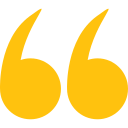
We travelled with Falcon Safaris in Zimbabwe and Botswana for 16 days. Falcon designed a wonderful trip with private guide to the most interesting sites in both countries. The organization of the whole trip was excellent, flights within the country, accommodation and activites. The guides were very knowledgable and told us a lot about the countries, their history, people, economy and much more. We visited the Great Zimbabwe Ruins, the Victoria Falls Tour and a number of national parks in both countries.
Rhino tracking was a real adventure! We had tremendous further game drives and saw very many animals - we did the Big Five. We had much more Victoria Falls Activities than planned and enjoyed very much.We strongly recommend Falcon Safaris to everyone planning a trip to Southern Africa and East Africa.
Wonderful trip to Zimbabwe and Botswana with excellent organization and very competent guides

Our Consultant Vimbai was very helpful and accommodating. We stayed at the Elephant hills hotel which was nothing short of amazing.Our activities included a helicopter flight, dinner cruise as well as a morning game drive. All the activities were absolutely amazing.
Exceptional!

We worked with Gertrude to schedule and organize everything and she did an excellent job. I asked a lot of questions via e-mail and she answered everyone in a timely helpful manner. Our guide at Victoria Falls was also great. He met us at the airport, provided a thoughtful tour of the Falls and got us to our next guide in Botswana. Our lodgings at River View Lodge were just as described- very comfortable and excellent food. All the staff were so pleasant and helpful. If I had to do it again I would arrange a morning boat ride as well. We only did the sunset boat rides and they were the high point of our entire trip- we saw so many animals and our guide was very knowledgeable. Just a great experience. Our lodgings at Oddball's Enclave was rustic and we loved it. So great to disconnect from the world for a bit. Leo, our guide, was the best - got us out and about, saw fantastic wildlife and got back to camp safely each time. Doc manages the camp so well. This whole trip was planned and organized by Falcon Safaris and we could not have been happier.
Fabulous, well planned trip

Falcon safaris have given my the correct advice with excellent service. The only suggestion will be to work closer with the lodges to confirm bookings as soon as possible. We have booked and pay our deposit a year in advance. We have only receive our final convermation from Chobe Safari lodge a week before departure. I do realize its not within your controle but with limit alternatives and a group of 14 people it becomes an issue to find alternative accomodation if the booking was cancelled.
Excellent and efficient service
Explore Our Africa With Customize Your Tour
We love Africa's diversity and create amazing trips for you. With 30+ years of experience, we customize every trip just for you.
